Disclosure: This article contains affiliate links. We may earn a commission from purchases at no extra cost to you, which helps our travel content.
Cities, like manuscripts, reveal their true character between the lines—in the margins and footnotes that casual readers often miss. Charlotte, North Carolina, known primarily as a banking powerhouse, harbors stories that deserve far more than a cursory skim. Having spent two decades editing other people's adventures at publishing houses and National Geographic Books, I've developed an editor's eye for the overlooked paragraph, the compelling subplot that transforms a standard narrative into something extraordinary. Charlotte is full of these subplots: neighborhoods undergoing remarkable cultural renaissances, industrial spaces reimagined as creative hubs, and historical corridors where past and present engage in fascinating dialogue. This 48-hour guide isn't about Bank of America Plaza or the NASCAR Hall of Fame—though they have their merits—it's about the Queen City's unexplored chapters, the ones that reveal Charlotte's authentic voice amid the glossy corporate prose that often dominates its story.
Day 1: Morning – NoDa's Artistic Renaissance
I arrive in Charlotte as dawn breaks, the city still stretching and yawning before its workday begins. My first destination is NoDa (North Davidson), Charlotte's historic arts district that reminds me of Toronto's Queen West neighborhood before commercialization smoothed its edges. Twenty years ago, this was a textile mill district fallen into disrepair; today, it's undergone a creative rebirth without sacrificing its industrial soul.
I start at Smelly Cat Coffee House (yes, Friends fans, that's really its name), where the baristas craft pour-overs with the precision of literary editors. The walls showcase rotating exhibits from local artists, and I strike up a conversation with a photographer whose black-and-white series captures Charlotte's vanishing industrial landscapes. This conversation—unplanned, unscheduled—becomes a recurring theme of my Charlotte exploration.
"The best way to understand NoDa is to walk it slowly," she tells me, marking spots on my map that wouldn't make the typical guidebook.
Following her advice, I meander through the neighborhood, photographing the vibrant murals that transform ordinary walls into social commentary. My portable camera proves perfect for these urban explorations—lightweight enough to carry all day but with image quality that captures the intricate details of street art. The former textile mills now house everything from custom guitar workshops to microbreweries, each space telling a story of reinvention.
At the neighborhood's heart sits Neighborhood Theatre, a 1945 movie house transformed into one of Charlotte's best independent music venues. Even empty in the morning light, the space resonates with creative energy, its walls layered with decades of concert posters—a visual timeline of the neighborhood's cultural evolution.
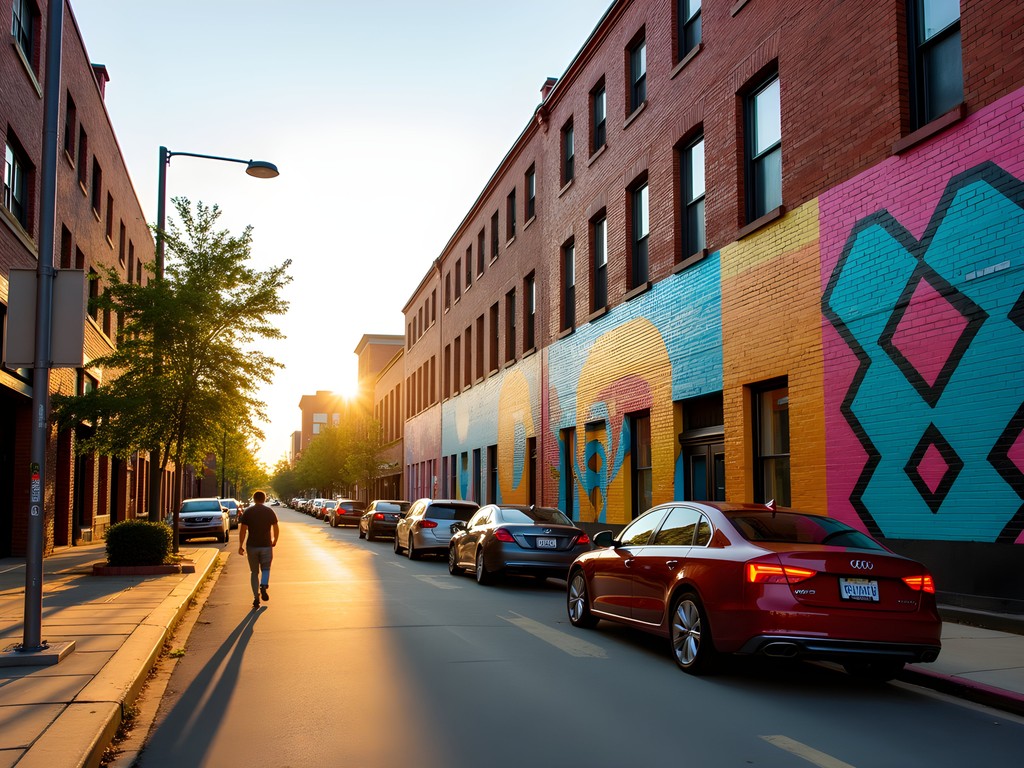
💡 Pro Tips
- Visit NoDa on a first or third Friday evening for the NoDa Gallery Crawl when studios and galleries stay open late
- Follow @exploreNoDa on Instagram for updates on pop-up events and temporary installations
- The Morning Glory Cafe offers the neighborhood's best breakfast sandwich—ask for the secret hot sauce
Day 1: Afternoon – Camp North End's Industrial Metamorphosis
After a quick lunch at Haberdish (where Southern comfort food receives thoughtful, modern revisions), I head to Camp North End—a 76-acre adaptive reuse project that's writing Charlotte's most ambitious redevelopment chapter. This former Model T factory and Cold War-era missile plant now hosts a creative ecosystem that would feel at home in Brooklyn or Berlin, yet maintains a distinctly Carolinian character.
The scale of the complex is impressive, but it's the details that captivate me—the way developers preserved industrial elements like massive gantry cranes and incorporated them into public spaces, creating a physical dialogue between past and present. My father, the geologist, taught me to read landscapes for their history; here, I read the adaptive architecture for stories of Charlotte's industrial evolution.
"We wanted to honor what came before while creating something new," explains Marcus, a local architect I meet who worked on the project. "There's a responsibility when you transform spaces with this much history."
The afternoon unfolds in a series of delightful discoveries: Black-owned businesses like Dupp & Swat showcasing contemporary Southern art; experimental culinary concepts in former loading docks; and BLKTECHCLT, an innovation hub supporting Black tech entrepreneurs. I spend an hour in Free Range Brewing, where the bartender—a former English literature major—discusses Charlotte's literary scene while pouring craft beers named after obscure poems.
As golden hour approaches, I find a quiet corner in the complex and pull out my travel journal to capture observations and impressions. After years of editing other writers' experiences, I've learned the importance of recording my own thoughts while they're fresh—the sensory details, overheard conversations, and unexpected connections that form the heart of meaningful travel writing.

💡 Pro Tips
- Visit on weekdays to see the makers and creators actively working in their studios
- Check the events calendar for free community yoga sessions held in the Boileryard
- The food stalls often offer happy hour specials from 4-6pm, perfect for early dinner
Day 1: Evening – Plaza Midwood's Eclectic Nightlife
As twilight settles over Charlotte, I make my way to Plaza Midwood—a neighborhood that feels like the city's unedited manuscript, complete with margin notes and creative tangents. Unlike the polished, corporate feel of Uptown, Plaza Midwood embraces a delightful eclecticism that reminds me of the diverse Toronto neighborhoods where I grew up.
The evening begins at Soul Gastrolounge, where I secure a spot on the rooftop just before it fills with locals. The tapas menu reflects Charlotte's evolving culinary identity—Southern ingredients reimagined through global techniques. I order the pork belly tacos and a craft cocktail infused with locally foraged botanicals, striking up a conversation with a couple at the neighboring table who turn out to be urban planners involved in Charlotte's greenway project.
"Charlotte is finally embracing its complexity," one tells me. "For years, the city tried to present a single narrative about banking and new money. Now we're celebrating our contradictions."
These chance encounters have always been my favorite part of solo travel—the unplanned conversations that provide insider perspectives no guidebook could offer.
After dinner, I wander through the neighborhood, past vintage clothing stores, record shops, and the iconic Diamond Restaurant—a 1945 diner that's witnessed decades of Charlotte's evolution. The night culminates at Snug Harbor, a dive bar with surprising depth, hosting an experimental jazz quartet whose music fills the room with improvisational conversation.
Returning to my accommodation—a charming Airbnb in a renovated 1920s bungalow—I'm struck by how Charlotte defies easy categorization. Like any good manuscript, its narrative requires close reading, attention to subtext, and an appreciation for the unexpected plot developments that emerge in the spaces between major attractions.
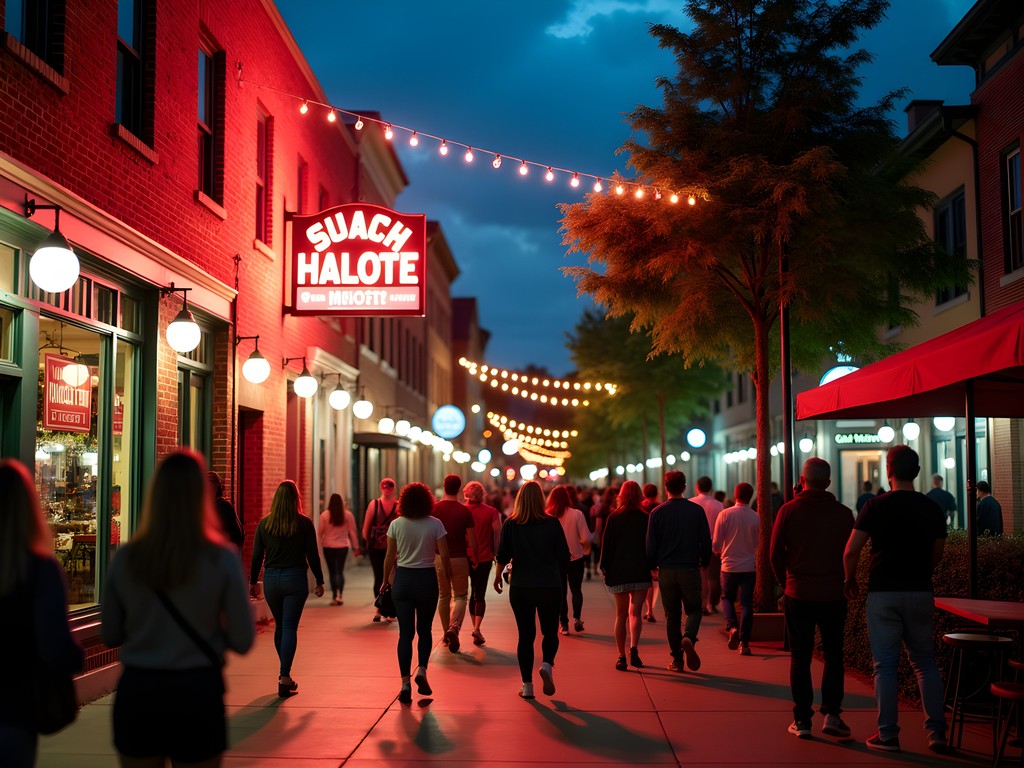
💡 Pro Tips
- For the best experience at Soul Gastrolounge, arrive before 6pm or after 9pm to avoid the peak wait times
- Common Market is perfect for late-night people watching with a local craft beer
- Check the schedule at Snug Harbor—their Sunday night showcase often features surprising national acts in an intimate setting
Day 2: Morning – Dilworth and the Rail Trail
My second morning in Charlotte begins in historic Dilworth, where tree-lined streets showcase the city's architectural heritage. Unlike the previous day's industrial exploration, today focuses on Charlotte's residential character and how contemporary urban planning is reconnecting historic neighborhoods.
Breakfast at Fenwick's feels like stepping into a neighborhood institution—because it is. The waitress calls regulars by name, and the menu hasn't changed substantially in decades. There's something reassuring about places that resist the constant pressure to reinvent themselves, that understand their value lies in consistency and community.
Fueled by strong coffee and a perfect omelet, I head to the Charlotte Rail Trail, a 3.5-mile urban path connecting neighborhoods along the LYNX Blue Line light rail. As someone who's documented endangered landscapes worldwide, I'm increasingly drawn to these urban adaptive reuse projects—the ways cities reclaim industrial corridors as public spaces.
The Rail Trail functions as Charlotte's linear park and public art gallery, with installations ranging from interactive sound sculptures to massive murals exploring the city's textile history. I capture these juxtapositions with my camera, particularly drawn to where industrial infrastructure meets artistic intervention.
Midway along the trail, I discover the Charlotte Trolley Rail Museum—a small but thoughtfully curated space chronicling how transportation shaped the city's development. The docent, a retired engineer named Harold, shares stories about Charlotte's historic streetcar system that once connected these neighborhoods before mid-century urban renewal projects dismantled them.
"We're finally returning to what worked a century ago," he tells me. "Connected neighborhoods, mixed-use development, public transportation. Sometimes progress means recognizing what your predecessors got right."
I continue along the trail with my hiking daypack—perfect for urban exploration with enough room for water, camera gear, and collected mementos. The trail leads me through the South End district, where former textile mills now house everything from tech startups to artisanal chocolate makers, each building a paragraph in Charlotte's ongoing story of reinvention.
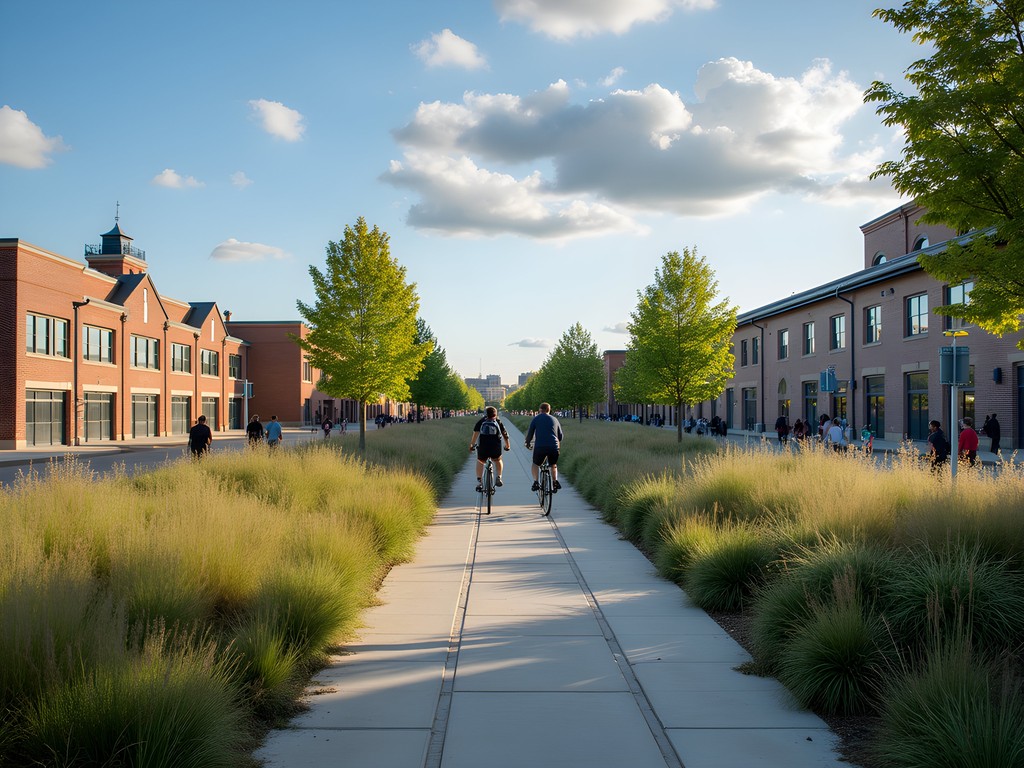
💡 Pro Tips
- Rent a bicycle from Charlotte B-Cycle to cover more ground along the Rail Trail
- Look for the 'Confetti Hearts' wall mural for a quintessential Charlotte photo opportunity
- The trail can get busy on weekends—early mornings offer the most contemplative experience
Day 2: Afternoon – West Charlotte's Community Renaissance
While most visitors stick to Charlotte's eastern neighborhoods, I dedicate my final afternoon to exploring West Charlotte—particularly the Historic West End and Seversville areas. These predominantly Black neighborhoods have rich histories often overlooked in Charlotte's official narrative but are now experiencing community-led revitalization that honors their cultural significance.
I begin at the Gantt Center for African-American Arts + Culture, where an exhibition on Charlotte's Brooklyn neighborhood—a thriving Black community destroyed by urban renewal in the 1960s—provides crucial context for understanding the city's complex racial history. The parallels to similar urban renewal projects in Toronto's Africville community are striking, reminding me how consistently North American cities have erased Black neighborhoods in the name of progress.
From there, I follow the Gold Line streetcar to Johnson C. Smith University, a historically Black university whose Gothic Revival architecture stands in beautiful contrast to Charlotte's modern skyline. The campus bookstore yields a treasure—a locally published collection of oral histories from West Charlotte residents that becomes my guidebook for the afternoon.
At Three Sisters Market, a cooperative grocery store addressing the area's food desert status, I meet Regine, one of the founding members, who offers to show me the community garden behind the store.
"People talk about West Charlotte being 'discovered,' but we've always been here," she explains as we walk between raised beds of collards and peppers. "What's changing is who's listening to our stories."
The afternoon continues at the Rosa Parks Farmers Market, where local growers—many from families who have farmed in Mecklenburg County for generations—sell produce alongside artisans offering handcrafted goods. I purchase small gifts: locally made hot sauce, hand-printed tea towels featuring Charlotte landmarks, and a small watercolor of the skyline by a teenage artist from the neighborhood.
As the market winds down, I find myself in conversation with a group of community activists who invite me to join them at Mosaic Village, where a new installation commemorates the neighborhood's civil rights history. Their passionate discussion about equitable development and cultural preservation reminds me why I left publishing to document these stories directly—the urgency of recording communities in transition, of ensuring diverse voices appear in the first draft of history.
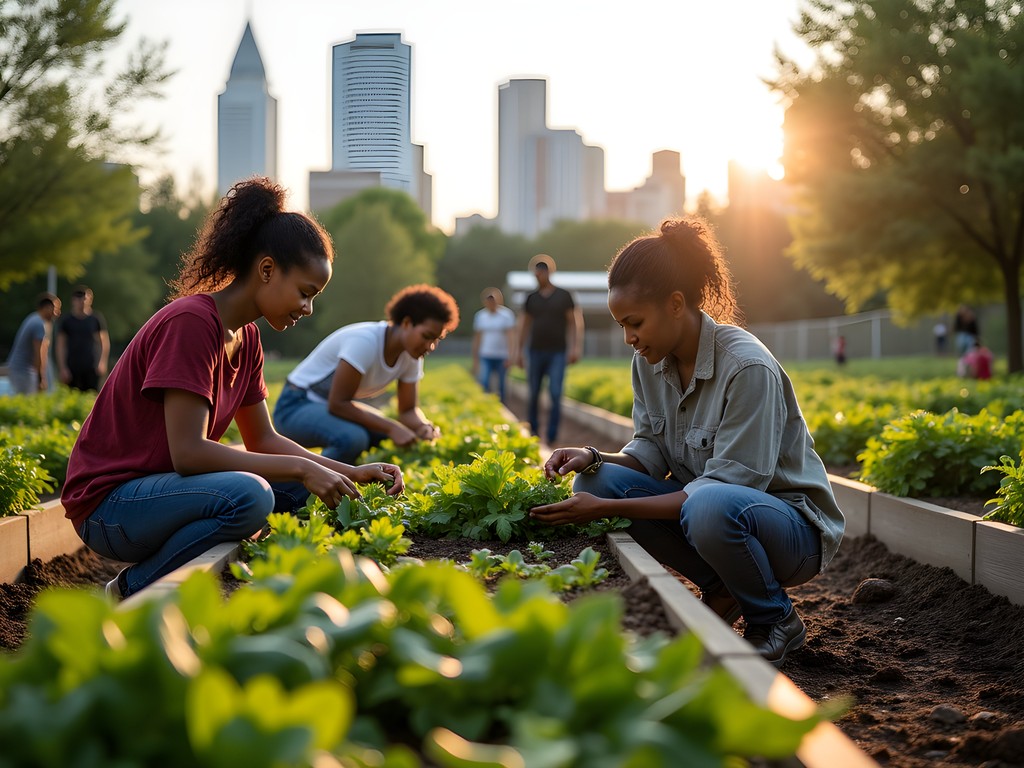
💡 Pro Tips
- Visit the Gantt Center on Sunday afternoons when admission is reduced
- The Gold Line streetcar offers an excellent orientation to West Charlotte's geography
- Check social media for pop-up events at LaCa Projects, which showcases Latin American contemporary art
Day 2: Evening – Uptown's Hidden Corners
For my final Charlotte evening, I return to Uptown—not for its glittering towers or sports venues, but to discover the hidden corners where the city's past and future converse in fascinating ways. I begin at Seventh Street Public Market, where local vendors transform Carolina ingredients into global cuisines. The space buzzes with energy as office workers, residents, and visitors mingle in a democratic celebration of food culture.
After sampling several small plates, I wander toward Fourth Ward, where Victorian homes have been meticulously preserved amid modern development. The juxtaposition creates a visual dialogue between architectural eras that reminds me of certain London neighborhoods, where Georgian townhouses stand alongside contemporary glass structures.
As twilight approaches, I discover the unexpected gem of my entire Charlotte visit: The Dock, a tiny jazz club tucked into an alley that doesn't appear on most maps. The space seats perhaps thirty people around a small stage where a trio is performing standards with remarkable innovation. The intimacy of the venue creates an atmosphere of collective appreciation—a reminder that some experiences simply can't be scaled up without losing their essential character.
"We've been here fifteen years," the owner tells me during a set break. "Most visitors to Charlotte never find us, which is fine. We're not trying to be a tourist attraction—we're trying to be a good neighborhood jazz club."
This sentiment—this commitment to authentic identity rather than performative tourism—encapsulates what I've come to appreciate most about Charlotte. The city seems comfortable existing on its own terms, neither apologizing for what it isn't nor pretending to be something it's not.
Later, I find myself on the rooftop of the Peculiar Rabbit, nursing a local craft beer and watching Charlotte's skyline illuminate against the darkening sky. My travel binoculars allow me to study architectural details of distant buildings, to appreciate the city as both panorama and intimate collection of details. Like any well-crafted manuscript, Charlotte reveals different meanings depending on whether you're skimming quickly or reading closely, whether you're focused on the main plot or the intriguing subplots developing in the margins.
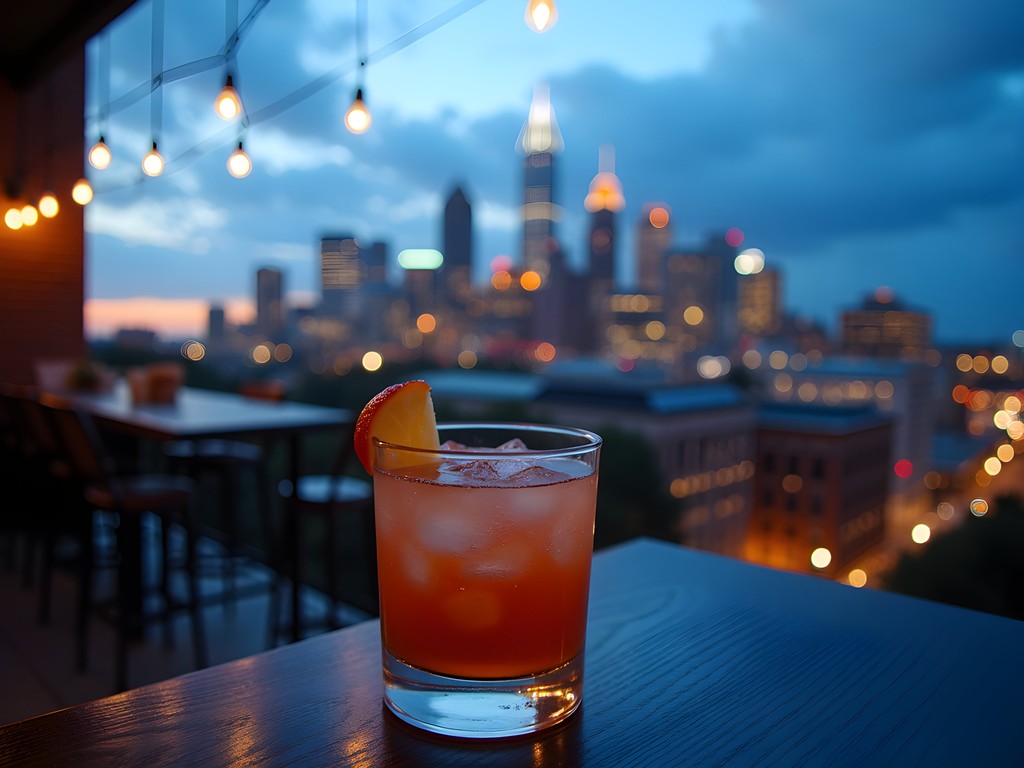
💡 Pro Tips
- The Dock doesn't take reservations—arrive early and be prepared to wait for a seat
- Fourth Ward offers free walking tour brochures at the neighborhood association website
- For the best skyline views, time your rooftop visit for 'blue hour'—about 30 minutes after sunset
Final Thoughts
Charlotte defies easy categorization—it's neither fully Southern nor completely cosmopolitan, neither entirely historic nor wholly modern. Like any city worth exploring deeply, it contains multitudes, contradictions, and surprises for those willing to venture beyond the obvious attractions. In just 48 hours, I've barely scratched the surface of Charlotte's complex narrative, but I've found enough compelling subplots to warrant a return visit. The city reminds me of certain manuscripts I once edited—the ones that initially seemed straightforward but revealed unexpected depth upon closer reading. As urban explorers, our job isn't to skim the headlines but to engage with the full text, footnotes and all. Charlotte rewards this kind of close reading, offering rich stories in its margins for those curious enough to look beyond the glossy cover.
✨ Key Takeaways
- Charlotte's most authentic experiences happen in neighborhood districts outside the banking center
- The city's industrial past provides fascinating context for its current creative renaissance
- Community-led revitalization in West Charlotte offers important counterpoint to corporate development
- The most rewarding discoveries come from conversations with locals passionate about their neighborhoods
📋 Practical Information
Best Time to Visit
Spring (April-May) and Fall (September-October) offer mild temperatures and numerous outdoor events
Budget Estimate
$150-250 per day including accommodations, meals, and activities
Recommended Duration
2-3 days for neighborhood exploration, 4-5 if including surrounding areas
Difficulty Level
Easy


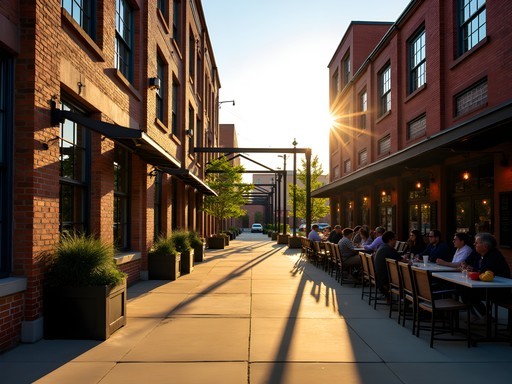
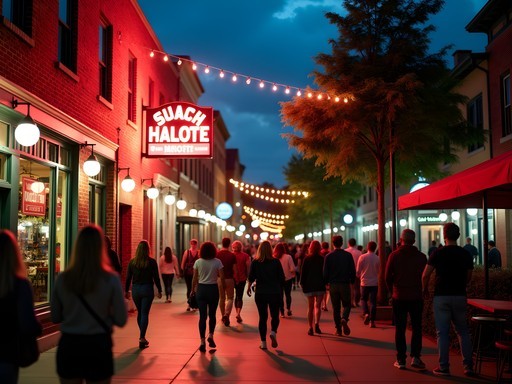
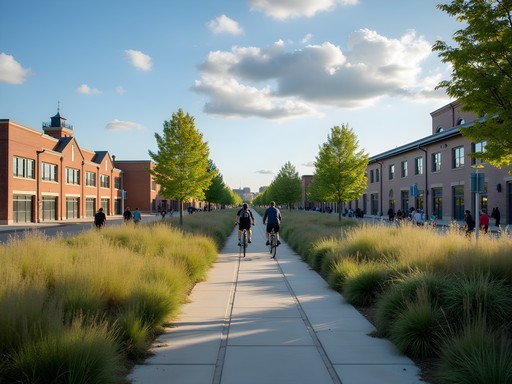
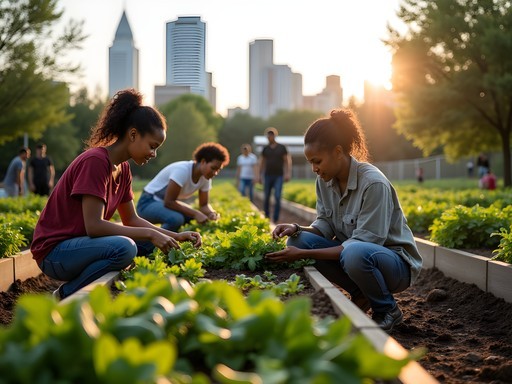





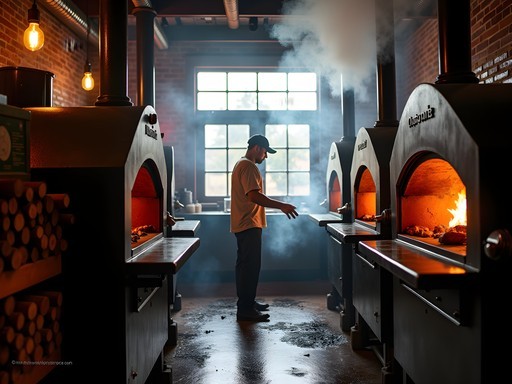





Comments
dreamone
Any recommendations for where to stay that's central to most of these spots?
Leah Clark
South End or Uptown would give you the best access to multiple neighborhoods via light rail. There are some great boutique hotels in both areas!
Hunter Thompson
ABSOLUTELY LOVED this guide! Charlotte completely surprised me when I visited last month. NoDa reminds me of Northern Quarter in Manchester - that perfect mix of gritty authenticity and creative energy. Found an amazing vintage shop called JAC's that had the coolest collection of band tees I've ever seen. Also, the food truck scene at Camp North End on Fridays is INSANE! Try the Korean-Southern fusion place - can't remember the name but their kimchi cheese fries changed my life. Plaza Midwood's nightlife is proper class too - Snug Harbor had a brilliant local band playing. Charlotte's got proper character if you know where to look!
mountainguide
Do you need a car to explore these neighborhoods or is public transportation decent?
summerway
The light rail is actually pretty good! It connects South End, Uptown and NoDa. For Camp North End you might want to grab an Uber though.
Douglas Bradley
This guide captures Charlotte's duality perfectly - the banking center facade versus these authentic cultural pockets. I spent three days in Charlotte last fall and found the Rail Trail particularly fascinating as an urban development case study. The way it connects South End to Uptown demonstrates thoughtful urban planning that other mid-sized cities could learn from. One addition I'd suggest: the 7th Street Public Market for local food artisans. It provides a concentrated taste of Carolina culinary traditions while supporting small businesses. I used my pocket guide alongside this blog post for a comprehensive exploration.
winterbackpacker
Just got back from Charlotte and wish I'd seen this sooner! Camp North End was AMAZING - such cool industrial vibes and that food hall is incredible. The brewery scene is top notch too!
dreamone
Which brewery would you recommend? Heading there in a couple weeks!
winterbackpacker
Definitely check out Wooden Robot in South End! Their Good Morning Vietnam coffee vanilla blonde ale is incredible. NoDa Brewing is great too!
summerway
Love NoDa! Don't miss the morning coffee at Smelly Cat Coffeehouse.
backpackace
Great guide! I'm visiting Charlotte next month and wondering how safe these neighborhoods are for solo travelers? Especially for evening exploration in Plaza Midwood?
Leah Clark
Plaza Midwood is generally quite safe! Lots of people out in the evenings, well-lit streets. Just use normal city precautions. The main strip along Central Avenue is always bustling with locals.
backpackace
Thanks Leah! That's reassuring. Looking forward to checking out some of those dive bars you mentioned.
hikingbackpacker
As a Charlotte local, I'm impressed! You really captured the essence of our neighborhoods. For anyone visiting, I'd add The Common Market in Plaza Midwood to your list - part deli, part convenience store, part bar with a killer patio. Also, if you're here on a weekend, don't miss the farmers market at Atherton Mill. Oh, and NoDa Brewing's original location has the best outdoor space for enjoying craft beers after exploring the neighborhood. Love seeing my city get the attention it deserves!
beachhero
That shot of the sunset over Plaza Midwood is STUNNING! What camera do you use?
Leah Clark
Thanks! Just my trusty old iPhone 16 Pro with a bit of editing in Lightroom Mobile. Charlotte gives you plenty of gorgeous sunset moments!
Ahmed Palmer
Excellent breakdown of Charlotte's character beyond the banking facades. I visited last autumn and would add that Optimist Hall (near NoDa) deserves a mention - that converted textile mill houses some remarkable food vendors and local artisans. The cocktail scene in Plaza Midwood particularly impressed me; Soul Gastrolounge's rooftop views pair wonderfully with their small plates concept. One suggestion for urban explorers: Charlotte's weather can shift dramatically in spring/summer. I was caught in a sudden downpour while exploring the Rail Trail and wished I'd packed my compact umbrella instead of leaving it at the hotel. The city's microclimate seems particularly unpredictable compared to other Southern cities I've visited.
wandermaster
Optimist Hall looks amazing from the photos! Adding it to my list for sure. And thanks for the weather tip - Charlotte sounds like my hometown where we say 'if you don't like the weather, wait 15 minutes'
journeyguy
Soul Gastrolounge was one of our favorites too! Those pork belly dumplings were incredible. And yes to the random weather - we had sunshine, rain, and humidity all within hours.
Venture X
Premium card with 2X miles, $300 travel credit, Priority Pass